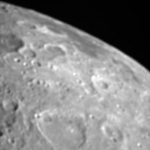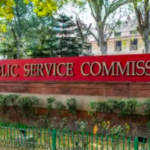The Chandela or Chandel was Indian Rajput clan of Central India. They were popularly termed as Chandelas or Jejakabhukti dynasty in Indian history. A section of the Chandelas which was also known as Chandela Dynasty ruled much of the Bundelkhand region of Central India for long periods approximately 500 years between the 9th and the 13th centuries AD. In those days, Bundelkhand region was popularly known by the name of Jejakabhukti.
The Chandel dynasty is famous in Indian history for Maharaja Rao Vidyadhara, who repulsed the attacks of Mahmud of Ghazni and also for his temples art and sculpture. They become more popular for the artistically sculptured temples, made during their rule in Central India. These temples are unique and more talked among people, due to introduction of eroticism as one of the subject in sculpture work, carried out in outer-walls of temples.
Although it is just 10% of total work but attracts 90% of the curious visitors. Introduction of this subject in temple art shows another side of Hindu culture which is often termed as more conservative. These temples are example of open though-process of those time society and shows that Hindus were far more advanced and society was far more open than today’s society.
Khajuraho temples construction work keep on going throughout the rule period as Chandela rulers had made it as tradition and social duty of King to construct more than 10 temples in his rule period or lifetime. At one time more than 120 temples were present here but now only 20 temples are remaining and less than this were shown to tourists.
| CHANDELA DYNASTY CHRONOLOGY | ||
| RULER | RULING PERIOD | DESCRIPTION |
| Nanuka | 835 – 845 CE | Founder of Chandela dynasty. Ruler of Khajuravatika, fuedatory of Gujara-Pratihara |
| Vakpati | 845 – 865 CE | Ruler of Khajuravatika, fuedatory of Gujara-Pratihara |
| Jayashakti & Vijayashakti | 865 – 885 CE | Ruler of Khajuravatika, fuedatory of Gujara-Pratihara |
| Rahila | 885 – 905 CE | Ruler of Jijakbhukti, fuedatory of Gujara-Pratihara |
| Shri Harshadev | 905 – 925 CE | Ruler of Jijakbhukti, fuedatory of Gujara-Pratihara |
| Yashovarman | 925 – 950 CE | Independent King of Jijakbhukti. |
| Dhangadeva | 950 – 999 CE | Independent King of Jijakbhukti. |
| Gandadeva | 999 – 1002 CE | Independent King of Jijakbhukti. |
| Vidyadhara | 1003 – 1035 CE | Independent King of Jijakbhukti. |
| Vijaypala | 1035 – 1050 CE | Independent King of Jijakbhukti. |
| Devavarman | 1050 – 1060 CE | Independent King of Jijakbhukti. |
| Kirtivarman | 1060 – 1100 CE | Independent King of Jijakbhukti. |
| Sallakshanavarman | 1100 – 1110 CE | Independent King of Jijakbhukti. |
| Jayavarman | 1110 – 1120 CE | Independent King of Jijakbhukti. |
| Prithvivarman | 1120 – 1128 CE | Independent King of Jijakbhukti. |
| Madanavarman | 1128 – 1165 CE | Ruler of Mahoba. |
| Yahsovarman-II | 1164 – 1165 CE | Very short period ruler of Jejakbhukti region. |
| Paramardi | 1165 – 1203 CE | Independent king of Mahoba for sometime and later surrendered to Delhi Sultanate. |
| Trailokya Varman | 1203 – 1245 CE | Week ruler of Jejakbhukti region. |
| Viravarman | 1245 – 1285 CE | Week ruler of Jejakbhukti region. |
| Bhojavarman | 1285 – 1288 CE | Week ruler of Jejakbhukti region. |
| Hammiravarman | 1288 – 1311 CE | Week ruler of Jejakbhukti region. |
| Viravarman | 1315 CE | Reduced to local chief |
ORIGIN
As per legends, contained in Mahobakhanda, Chandela family was descended from the union of Moon (in Hindi called Chandra) and Hemavati. She was the widowed daughter of Hemaraja, the priest of King Indrajit, ruler of Kashi. Most of the Rajput dynasties origin was similarly expressed in a glorified way to enhance their greatness and create separate identity.
As per A954 CE Khajuraho inscriptions, first king of Chandela dynasty i.e. Nannuka was descendant of sage Chandratreya who was son of famous Vedic sage Atri. However other inscription says that Chandratreya was grandson of Rishi Atri. Later medieval records like Prithiviraj Raso, Mahoba-khanda, Varna Ratnakara has defined Chandelas as one of the 36 Rajput clans. British scholars had expressed different version for Chandela’s origin.
As per them, they are derived from Gond tribe who were living in Vindha & Satpura ranges, since many centuries. Chandelas are earlier feudatories of Gujara Pratiharas who rule over Northern India from 7th to 11th century. Once they kingdome became week in 9th century, Chandela declared themselves as independent rulers.
Chandelas trace back their original home to Maniyagarh. Its name is derived from Godess Maniya Devi, worshipped by Chandela and Gond tribals. Till 5th Chandela Ruler Rahila, they were subordinate to the Pratihara and after that they started ruling independently. Further Chandela dynasty history is discussed below.
HISTORY
History supports the fact that the Rajputs of Chandela dynasty are the descendants of the sage Chandratreya, son of the moon. Many legends are in the air about the origin of this dynasty. The capital city of Chandels was Khajuraho which was later changed to Mahoba. The former capital city was a part of Pratihara kingdom. Nannuk, a ruler of small kingdom was the founder of Chandela Dynasty.
Khajuraho was a strong hold of Nannuk who was considered as the chief of his clan. Vakapati succeeded his father in the first quarter of tenth century. Vakapati had to often assist Pratiharas in the battle field, as he was a liegeman of them. Some inscriptions prove that his territory extended till Vindhya hills. Jaishakti, the elder son, succeeded the throne and was successful in extending his empire.
Jaishakti, the elder brother who ruled first, was also called Jai Jak and from this name the region ruled by the Chandelas acquired the name of Jaijikbhukti. He was succeeded on the throne by his younger brother, Vajaishakti. According to inscriptions, Vijaishakti conquered a number of neighboring areas. Rahil, the son of Vijaishakti, lead the throne after him. The village Rahilya which is situated in south west of Mohaba was named after him.
There he also built a tank known as Rahilyasagar and a temple on its banks, He had ruled for twenty years. He was succeeded by his son Harshdev around 900 A.D. He extended his dominion in his twenty five years of rule. During his reign, Rashtrakuta King Indra III, invaded and captured Kannauj. He had helped the Pratihara King Mahipal I to get back Kannauj.
He further strengthened his position by marrying Kanchuka, a princess of a Chauhan clan of the Malwa region. After Harshdev’s death Yashorvarman, son of Harshdev succeeded him. He began to take over the neighbouring areas of the Rashtrakuta kingdom. He proved to be an able general and a brave warrior. He captured Kalinjar and extended his empire in the north and in the south. He reached the banks of the Yamuna in one direction and the borders of Chedi and Malwa in the other. Chandellas became stong by these military conquests.
Dhangdev succeeded Yashodharman (Lakshvarman)and ruled over Khajuraho from 945 A.D. to 1002 A.D. Chandelas reached the peak of their power during his reign by expanding the territory and keeping intact of whatever his father had bequeathed to him. He take over the eastern part of Pratihara’s kingdom lying north of the Yamuna. Kalinjar had attained great importance after Khajuraho and was regarded as the second capital of the kingdom.
He was a great patron of art and literature. After the death of Dhangdev, Ganda ascended the throne of Khajuraho. Though he ruled for fifteen years only it was a reign was of peace and prosperity. Vidyadhar succeeded his father Ganda. Muslim invaders had started attacking and plundering India. Vidyadhar gathered all his strength in defending his country against the attack of Mahmud Ghazni. Vidyadhar was followed by his son Vijaipal.
Kalchuris took away some of the Chandela territory. On a whole Vijaipal was able to maintain his remaining kingdom. Devvarman was the successor of Vijaipal, his son though not much information is available regarding him. After Vijaypal there were Kirtiverman then Sallakshan Verman, Jaiverman, Prithviverman as the descendent but their reign was small. Madanvarman, his son fought battles to regain the lost reputation of the Chandelas. He was a strong ruler of Kalinjar, Mahoba, Ajaigarh and Khajuraho.
The temples building activity was once again seen in Khajuraho. Yashovarman II succeeded Madanvarman but had a very brief reign. After Yashovarman II died, Parmardidev, his son, occupied the throne. As the last of the greater Chandella rulers, he was crowned when he was a child. He ruled for a period of nearly thirty five years. The first few years of his reign were of peace. The storm came in the shape of a conflict with Prithviraj Chauhan second attack.
Kalinjar was still in the hands of the Chandelas but Virvarman and Bhojvarman, were local chieftains. The last glimpse is afforded by the romantic history of the princess Durgavati, daughter of the Chandela Raja of Mahoba, who married the Gond Raja Dalpat Shah of Mandla, and was killed in battle with Mughal emperor Akbar’s military general Asaf Khan.
This ends the legend of bravery, patrons of art and culture, rich and pious kings of the Chandella dynasty who ruled over central India for almost half a millennium. The outstanding contribution of the Chandellas was to build the famous temples of Khajuraho between the mid-10th and mid-11th centuries. The temples provide an example of north Indian temple architecture of that era. Chandellas are known to give heritage of awesome art and sculptures. They are also known for a large number of Jain and Hindu temples.
FALL OF CHANDELA DYNASTY
Rule of Chandela king Dhangadev was from Yamuna basin to Narmada basin and from Varanasi to Betwa river bank. Dhangadev was an ally of king Jaipal of Punjab when he was defeated by Sabuktigin of Ghazni. This defeat was the begining of Chandela dynasty downfall. After death of Dhangadev, Chandel’s capital was shifted from Khajuraho to Mahoba. With this shift, power-centers were Kalinjar and Ajaigarh forts. In comparision to Khajuraho, these forts are more secure and allows Chandela kingdom to offer better resistence to the Muslim invaders.
Chandel rulers are strong adherents of Hinduism, particularly Saivism. At the same time they were tolerant towards other sects like Vaishnavism, Jainism. Presence of Jain temples establishes this fact. In this period, Chandela’s ruled but not attained any considerable victories and annexed any new area on long-term basis. In year 1165 CE, Parmardi ascended the Chandela throne.
In year 1182-83, Prithviraj Chauhan invaded Chandela kingdom and sacked Mahoba due to which King Parmardi took shelter in Kalinjar fort but here also Prithviraj defeated Chandela forces and Parmardi shifted to Gaya. After sometime, he restored Chandela rule but in year 1202-03 CE, Delhi Sultanate invaded Chandela kingdom and Parmardi decided to surrender and pay tribute to them but died before he will pay anything. After that, Chandela continues to become week and other new dynasties emerged in to picture like Bundela in Orchha, Baghels in Bandhavgarh region.
(With the inputs of Khajuraho-India.org).


